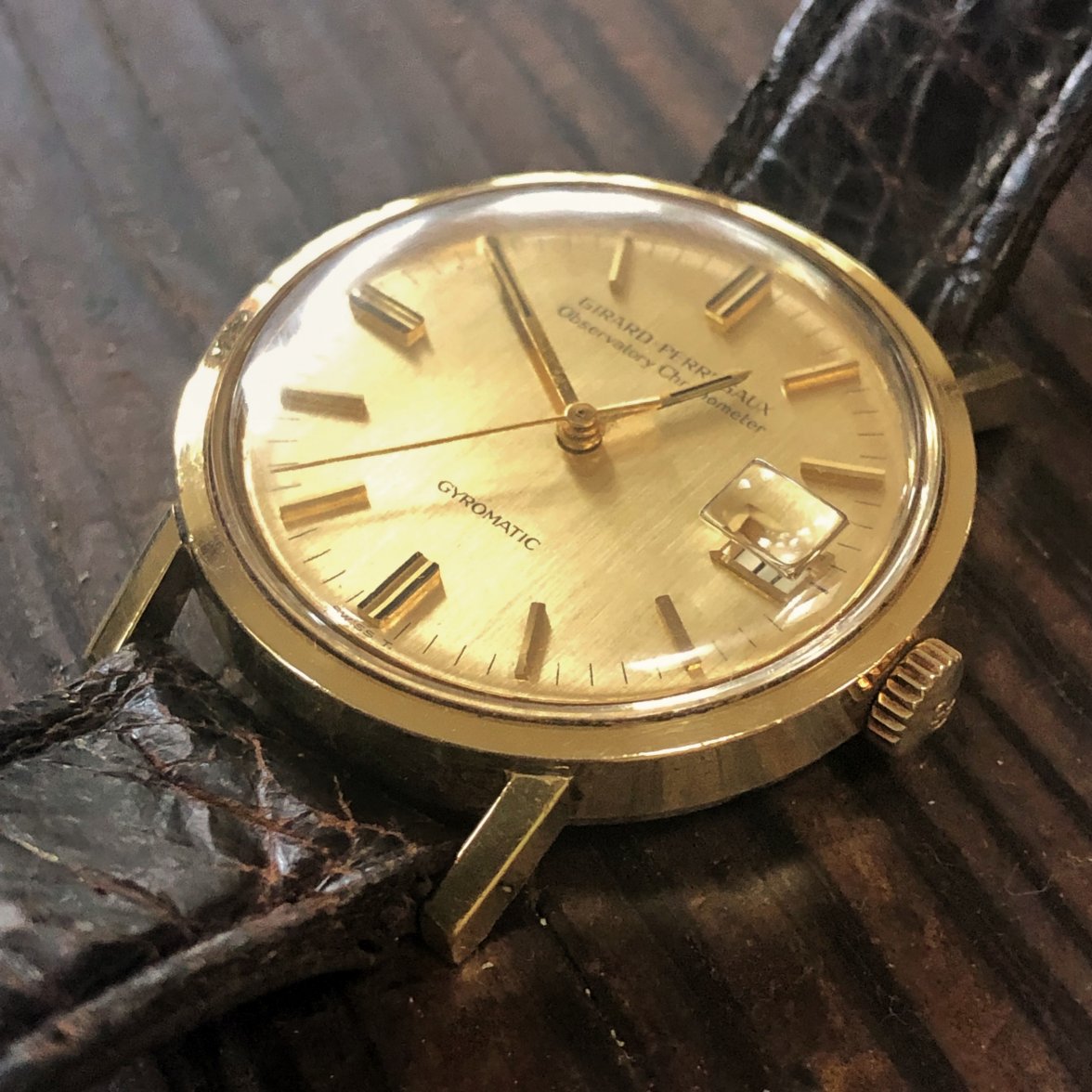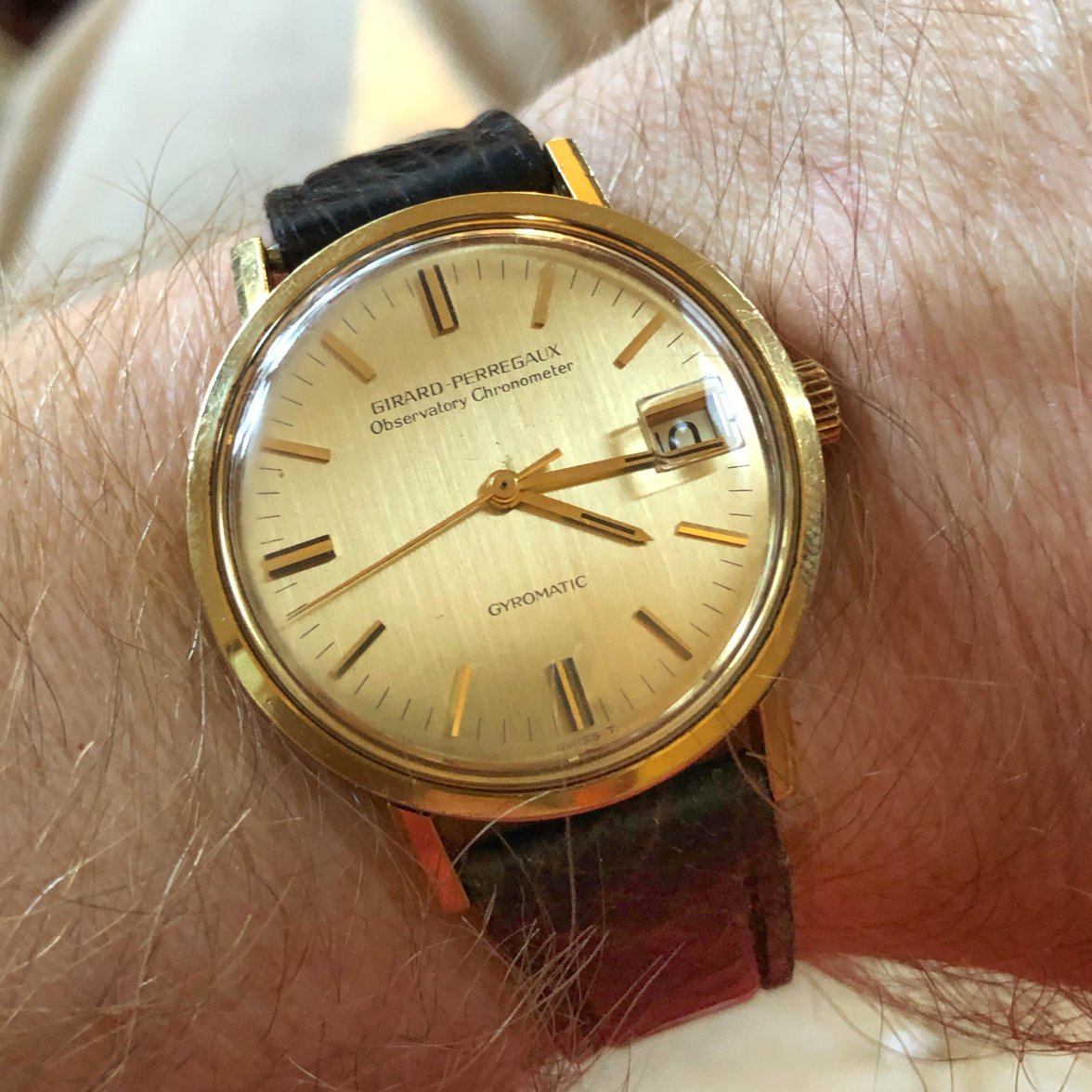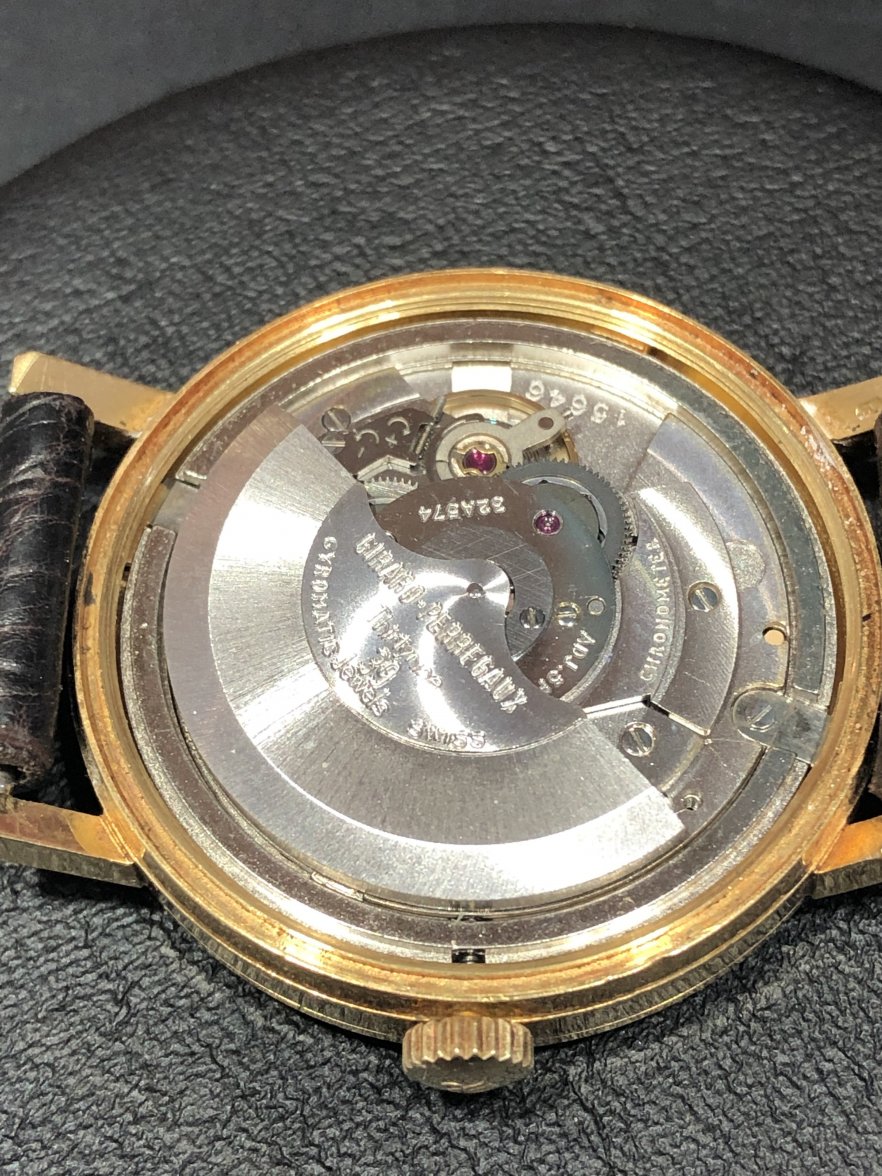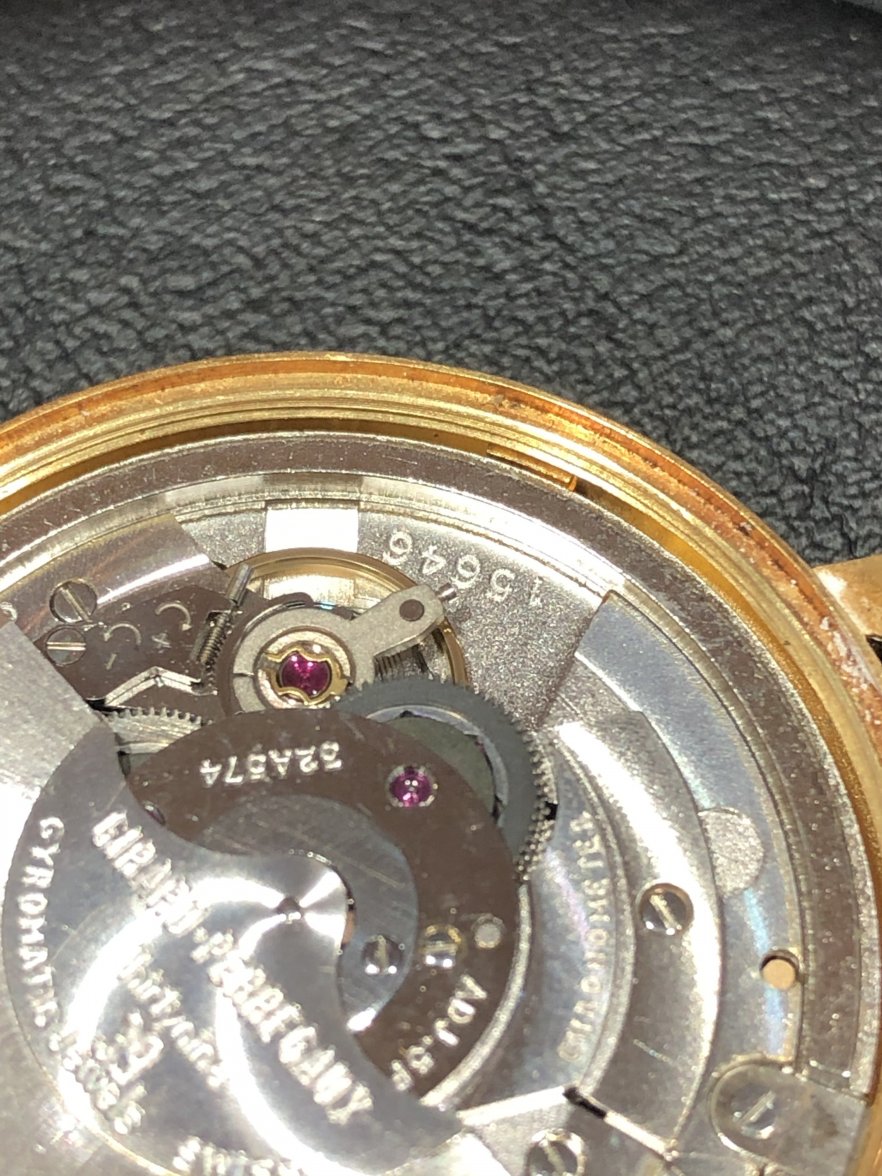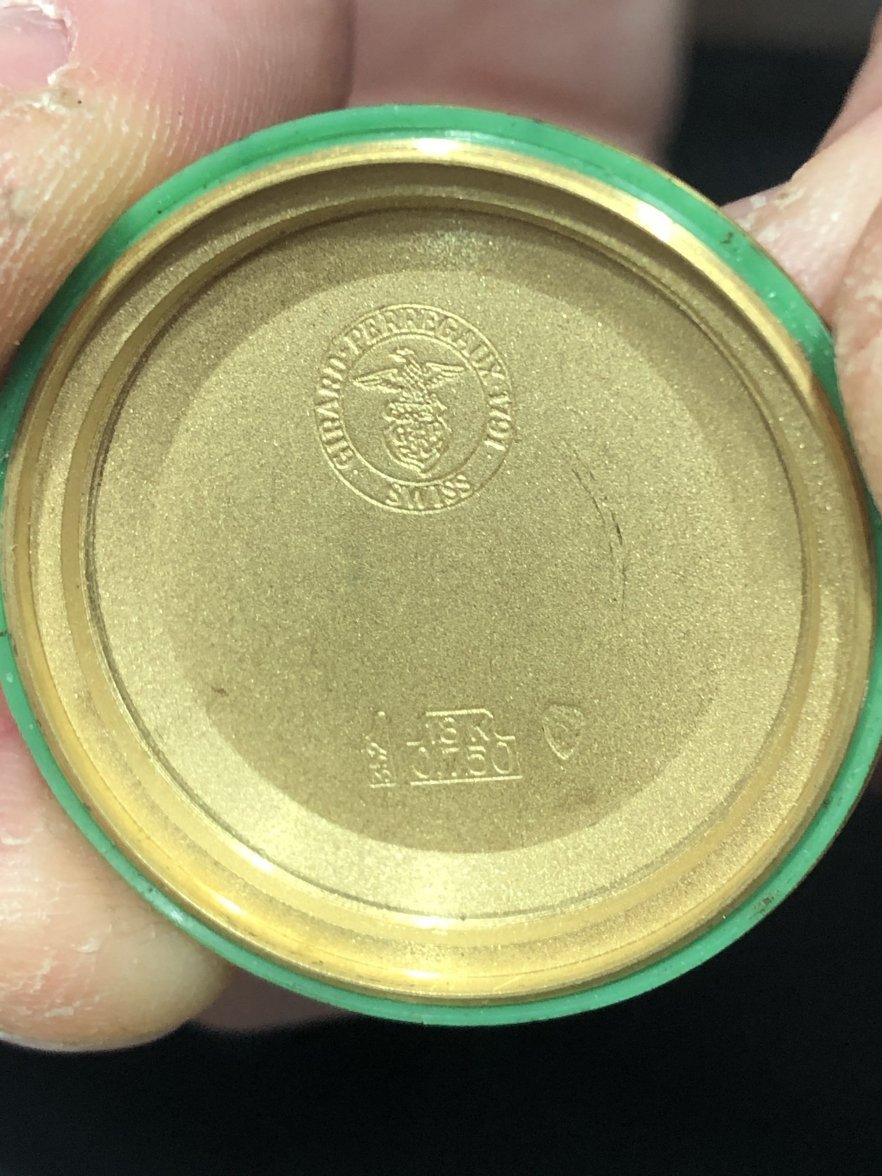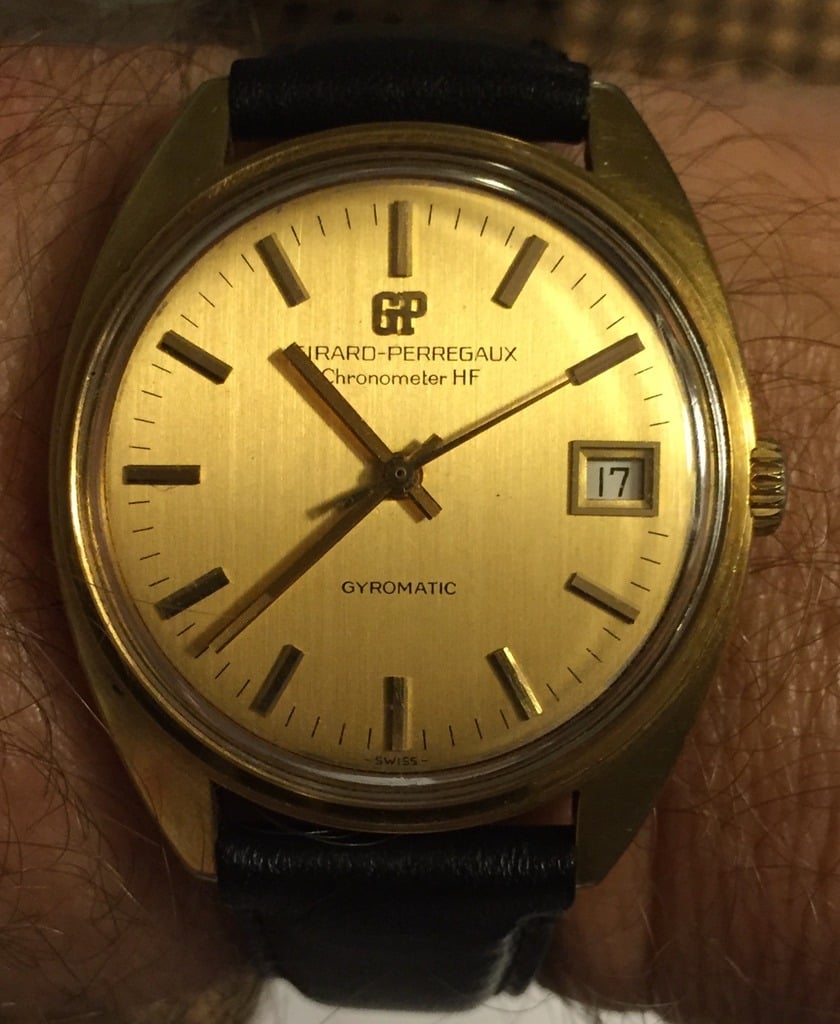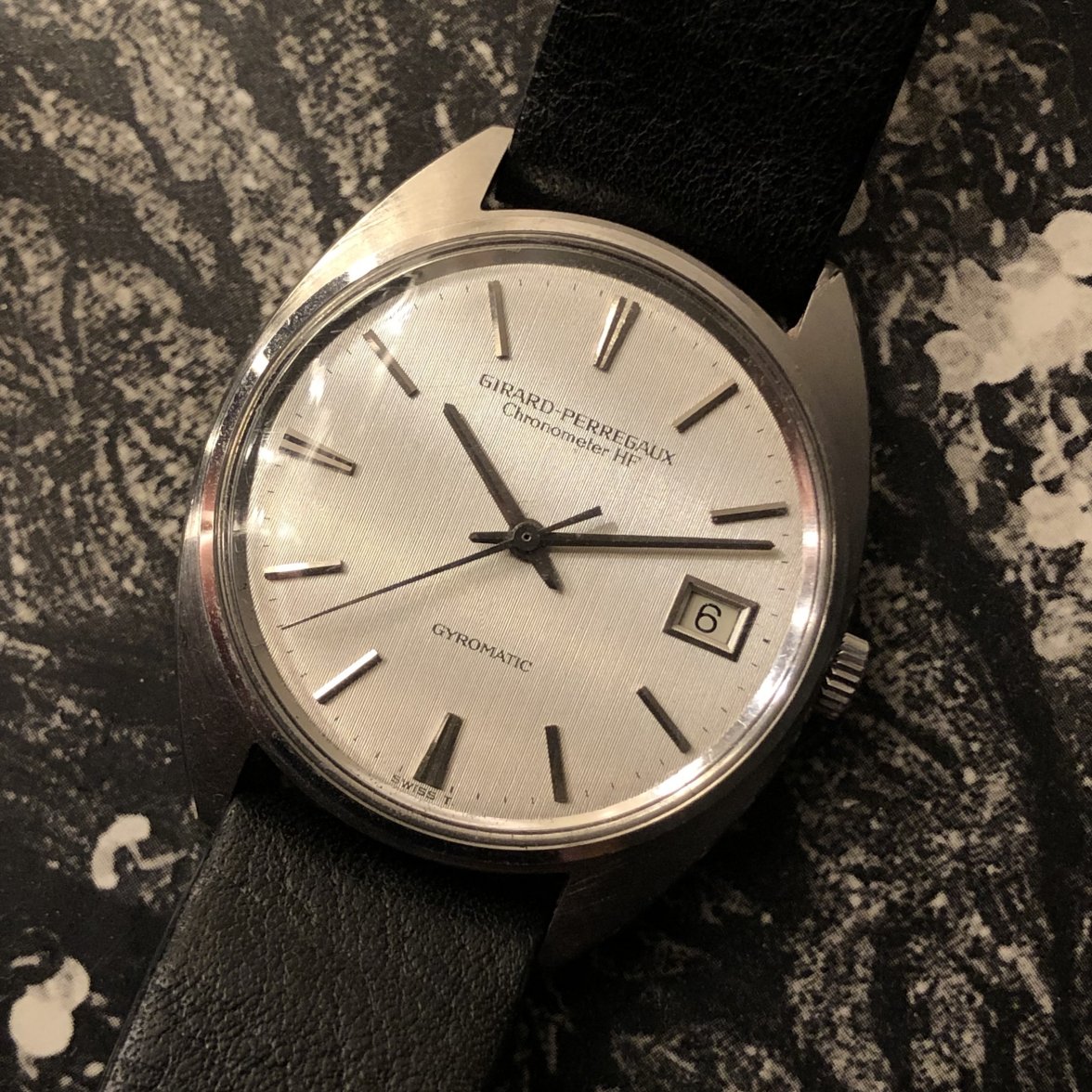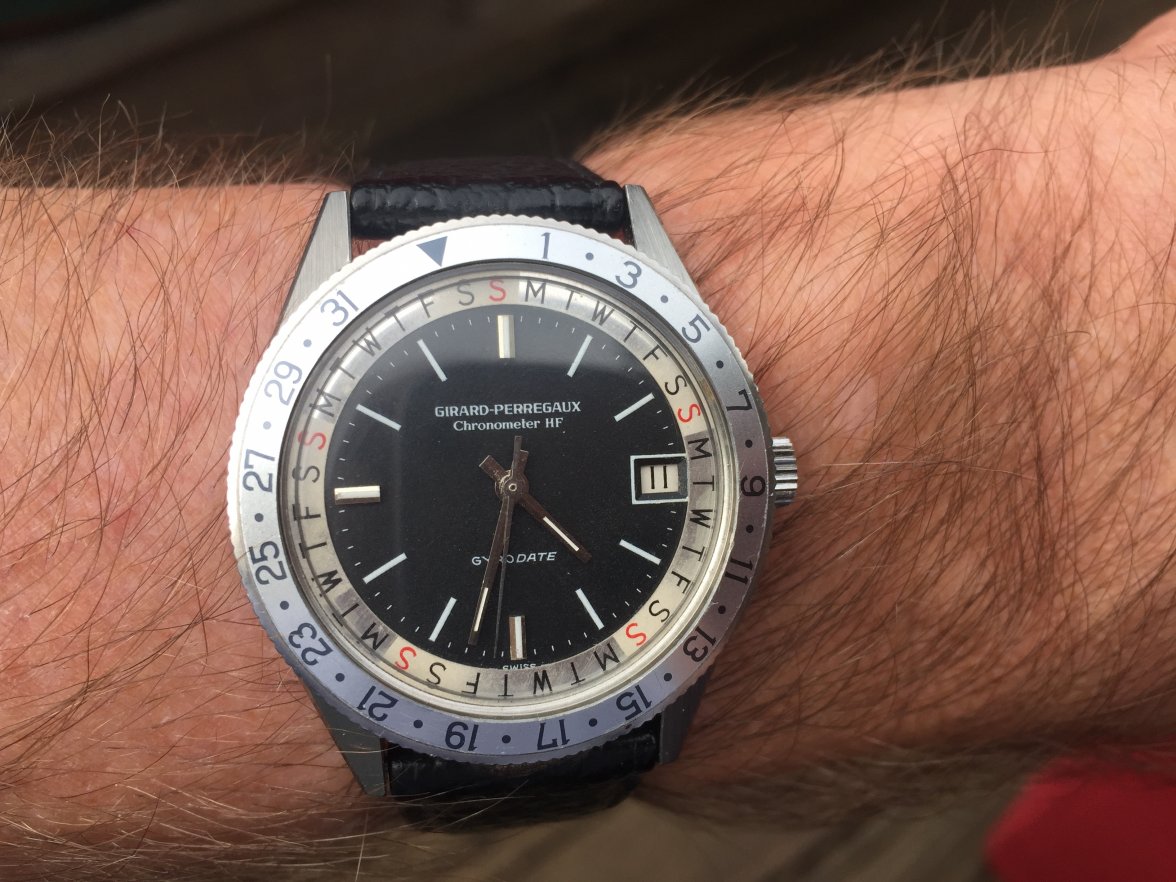watchknut
·Whilst cruising the local pawn shop before the end of the year, I spied an interesting looking gold dress watch and asked to take a look. Upon closer inspection, it had "Observatory Chronometer" printed on the dial.
Now I don't know much, but I do know that the Swiss take their movement classifications very seriously, so after a quick Google search and some haggling, I ended up with a rather unique piece.
There has been some interesting research on the Girard-Perregaux cal. 32A movements that were submitted to the Neufchatel Observatory in 1966-67 - see article on Fratello and a great thread on Watchuseek.
The Cliff Notes version is this...
Prominent European observatories in Neuchatel, Geneve, Kew, and Besancon would accept a limited number of movements from watchmakers for a taxing 45 day timing test with prizes awarded at the end. The tests were a way for local watchmakers and brands to build credibility for accuracy of their movements and market them more effectively.
The movements that were submitted were not production movements, but rather highly tuned one-off pieces that were cased in brass and wood for the tests. Some would be cased for sale, but none were meant for public consumption.
This all changed in 1966-67 when Girard-Perregaux submitted an entire production run (662) of a new caliber, the high frequency 32A, for the Neuchatel Observatory for testing. This is where the data and research gets a little iffy because the records don't delineate which movements received the B.O. (Bureaux officiels de contrôle de la marche des montres) certification which was a less stringent 15 day test for wrist chronometers versus the ones that went through the 45 day trials to become an Observatory Chronometer.
All of the movements and performance are archived in the Observatory Chronometer Database.
There is the number 40 from the Fratello article, but others think the number closer to 100. Either way, it's a relatively small number of watches that display the Observatory Chronometer on the dial.
My watch is Chronometer number 15646 that was timed by P. Nicolet in 1967, receiving an N-Score of 21.45. It is cased in a 34mm 18kt yellow gold case with a brushed yellow gold dial and applied gold stick numerals.
While it's far from the normal sport Rolex that I collect, it does fit a niche in the collection as a piece of horological history.
Now I don't know much, but I do know that the Swiss take their movement classifications very seriously, so after a quick Google search and some haggling, I ended up with a rather unique piece.
There has been some interesting research on the Girard-Perregaux cal. 32A movements that were submitted to the Neufchatel Observatory in 1966-67 - see article on Fratello and a great thread on Watchuseek.
The Cliff Notes version is this...
Prominent European observatories in Neuchatel, Geneve, Kew, and Besancon would accept a limited number of movements from watchmakers for a taxing 45 day timing test with prizes awarded at the end. The tests were a way for local watchmakers and brands to build credibility for accuracy of their movements and market them more effectively.
The movements that were submitted were not production movements, but rather highly tuned one-off pieces that were cased in brass and wood for the tests. Some would be cased for sale, but none were meant for public consumption.
This all changed in 1966-67 when Girard-Perregaux submitted an entire production run (662) of a new caliber, the high frequency 32A, for the Neuchatel Observatory for testing. This is where the data and research gets a little iffy because the records don't delineate which movements received the B.O. (Bureaux officiels de contrôle de la marche des montres) certification which was a less stringent 15 day test for wrist chronometers versus the ones that went through the 45 day trials to become an Observatory Chronometer.
All of the movements and performance are archived in the Observatory Chronometer Database.
There is the number 40 from the Fratello article, but others think the number closer to 100. Either way, it's a relatively small number of watches that display the Observatory Chronometer on the dial.
My watch is Chronometer number 15646 that was timed by P. Nicolet in 1967, receiving an N-Score of 21.45. It is cased in a 34mm 18kt yellow gold case with a brushed yellow gold dial and applied gold stick numerals.
While it's far from the normal sport Rolex that I collect, it does fit a niche in the collection as a piece of horological history.
